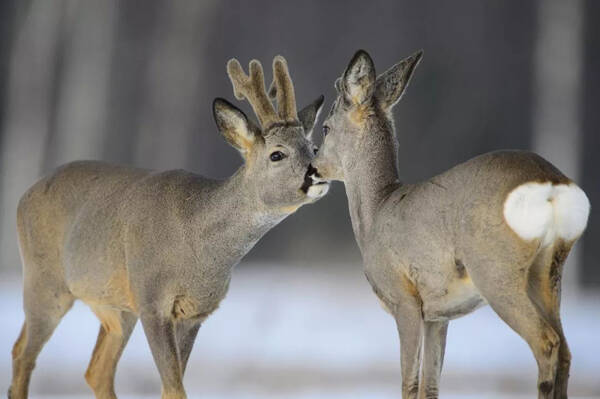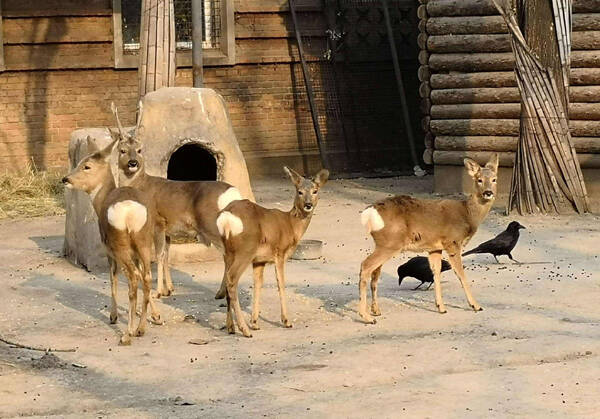Capreolus pygargus
IUCN
LCBasic Information
Scientific classification
- name:Capreolus pygargus
- Scientific Name:Capreolus pygargus,Siberian Roe Deer,Eastern roe deer,Siberian Roe,Oriental roe deer, roe deer, dwarf deer, roe deer
- Outline:Ungulata
- Family:Artiodactyla Cervidae Capreolus
Vital signs
- length:95-140cm
- Weight:20-40kg
- lifetime:10-12years
Feature
Has a strong "curiosity", known as the silly roe deer
Distribution and Habitat
Existing: distributed in China, Kazakhstan, South Korea, North Korea, Mongolia, and Russia. In China, it is distributed in Inner Mongolia, Heilongjiang, Jilin, Liaoning, Hebei, Shandong, Henan, Shanxi, Shaanxi, Xinjiang, Qinghai, Sichuan, and Gansu. In Gansu, it is found in Longdong, Pingliang area, and the northern part of Zhangxian County in the middle, and occasionally in Huining until Linxia.
Uncertain: Kyrgyzstan and Myanmar.
Siberian roe deer generally live in broad-leaved forests or mixed coniferous and broad-leaved forests, mostly in mixed forests on barren mountains where trees are sparse and leathery. The habitat depends on the abundance of food and the canopy density of the forest. In winter, it is restricted by climatic conditions and food, and its range of activities is relatively small. It is mainly located in the clearings between the forests with relatively high altitudes and low canopy density, with sufficient sunlight, rich understory vegetation, sufficient edib
Appearance
The head and body are 95 to 140 cm long, the shoulder height is 65 to 95 cm, the tail is 20 to 40 mm long, the ear length is 128 to 140 mm, the total skull length is 210 to 250 mm, and the weight is 20 to 40 kg.
The body is of moderate size. Males have horns, while females do not. The horns are short and straight, and the horn handle is divided into two forks, with the first and second tips pointing upwards and the third tip pointing backwards and inwards. There is a circle of rough ridges at the base of the horns. Females have a raised ridge on the posterior and lateral edge of the frontal bone. The body is of moderate size, with slender limbs, a very short tail, and dense and thick winter fur. The base of the fur is morning glory purple, the tips of the fur are black, and there is a small section of brown in the middle. The fur color is uniform and shiny. Back: From the mouth, forehead, neck to the back is yellow-brown. The fur color of the midline of the back is dark, and the fur
Details
Siberian roe deer (scientific name: Capreolus pygargus) is also known as Siberian Roe Deer, Eastern roe deer, and Siberian Roe. It has four subspecies. It is one of the two species in the genus Capreolus, Cervidae, and is listed alongside the western roe deer.

Siberian roe deer are alert, with keen sense of smell, hearing and vision; they run fast, move in the morning and evening, rarely move during the day, and take shelter in the shade of trees or cool rivers in summer. Sometimes they go to the alkali field to drink water, rarely act alone, and often appear in groups of three or five in the forest area, with the big one often running in front. They like to eat the tender branches, buds, leaves, fallen leaves, small berries, mushrooms and various grasses of shrubs, and they are harmful to seedlings. In addition, they harm crops before and after the autumn harvest, eating soybeans and millet.
Siberian roe deer are seasonal single-estrus animals, reaching sexual maturity at 430 to 440 days. They are in estrus from late August to mid-September, which is also the peak period of mating and reproduction. When in estrus, male roe deer chase female roe in circles, and wreath-shaped footprints appear on the ground. The gestation period is 270 to 280 days. Before giving birth, the female roe deer first disperse the young roe born in the first year, and then go into the dense forest to give birth. Young roe deer are born from March to June, with 1 to 2 pups per litter. If two pups are born in one litter, the birth places are 10 to 20 meters apart, and they are breastfed separately. Ten days after birth, the mother roe leads the newly born young roe back to the group, and the young roe reaches sexual maturity in 1.5 to 2 years. Lifespan is 10 to 12 years.
Siberian roe has the physiological characteristic of delayed implantation in reproduction, which is generally delayed by 4 to 5 months, and is born when the external environmental conditions are suitable. If the winter is too cold, the birth of the young roe will be delayed, and it will be born as late as June. This is when the weather is warming, plants begin to grow, and food is gradually abundant, which is conducive to the survival of young roe. The young roe are born with their eyes open, and the hair shaft can stand and walk, but it is unstable. After being frightened, they cannot escape normally and are prone to falling, but they can live a wandering life with the mother roe until they can live independently. The lactation period is one and a half months. Newborn roe deer have spots on their bodies, which disappear when the hair falls off after half a year. The horns of roe deer do not grow until 4 to 5 months after birth, and they are not forked. They shed their horns once a year, falling off in November, and begin to grow again in January of the following year, growing to maturity between April and May. They shed their fur twice a year, and their winter fur is the same color as the grass and shrubs at the time, while their summer fur is the same color as the moist loess.

The Siberian roe deer is well-known among the Chinese people, and the legends about the Siberian roe deer are well-known at home and abroad. The Siberian roe deer not only has edible value, but also has medicinal value and ornamental value. Roe deer meat is known as the "king of lean meat". It is high in protein, low in fat and cholesterol. It is lean and nutritious. Its cholesterol content is lower than beef. It has the dual health functions of nourishing yin and tonifying yang. Roe deer antlers, roe deer horns, roe deer fetuses and roe deer whips also have medical and health functions. Roe deer antlers have the functions of producing sperm, replenishing marrow, nourishing blood and tonifying yang. They can improve memory and immunity, and have the functions of anti-fatigue, anti-aging and strengthening the body. Countries such as South Korea, Japan, Thailand, Singapore and India have used roe deer antler powder as a food additive for children's development and the elderly's longevity. Roe deer blood, heart, liver, kidney, bone and meat all have the function of nourishing the body and prolonging life, and have been confirmed by modern medical research. Roe deer skin can be made into high-end precious leather clothes, and roe deer feces can be fermented and processed into high-quality fertilizers. As a deer, roe deer are slender, flexible and beautiful in appearance. They can be raised in zoos as ornamental animals for visitors to watch. They are also very cute because of their strong "curiosity", which is the source of the name "silly roe deer". They can also be used as hunting animals for people to hunt.
In 2020, the State Forestry and Grassland Administration issued the "Notice on Standardizing the Scope of Classification and Management of Prohibited Wildlife", prohibiting the breeding of roe deer for the purpose of eating. Except for special circumstances such as retaining a proper amount of seed sources, farmers are guided to stop breeding.
Listed in the "Red List of Endangered Species of the World Conservation Union" (IUCN) 2015 ver 3.1-Least Concern (LC).
Listed in the "National List of Terrestrial Wildlife with Important Economic and Scientific Research Value" issued by the State Forestry Administration of China on August 1, 2000.
Listed in the "Red List of Chinese Species" - Vulnerable (VU).
Listed in the "Key Protected Terrestrial Wildlife in Hebei Province, China".
Protect wildlife and eliminate game.
Maintaining ecological balance is everyone's responsibility!








